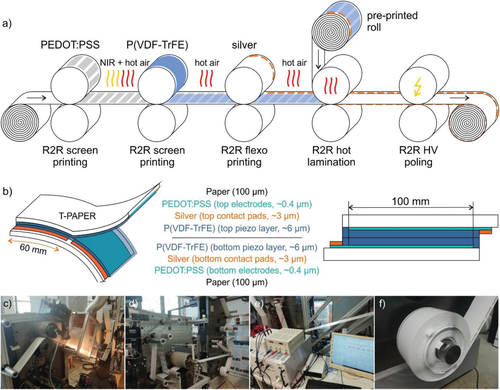(NTU Singapore researchers develop flexible crystal, paving the way for more efficient bendable electronics)
2021/2/8 シンガポール・南洋(ナンヤン)理工大学(NTU)

・ NTU、中国・南方科技大学および東呉大学が、電界により変形する電歪性と、折り曲げにより発電する圧電性の両特性を持つ新ハイブリッド材料を開発。最高記録となる最大 22%のせん断歪みを達成(従来は 0.5%)し、エネルギー効率も向上した。
・ 圧電材料は、ギター、ラウドスピーカー、センサーや電気モーター等で一般的に使用されている。例えば、エレキギターのピエゾ素子によるピックアップは、ギターの弦の振動を電気信号に変換する。それらの信号はその後、録音処理やラウドスピーカーで増幅される。
・ 電子デバイスへの統合が容易なことから、強誘電性結晶は 1920 年の発見以来 70 年以上にわたり圧電素子に利用されているが、脆く柔軟性に欠けるためアクチュエーター等でのアプリケーションが著しく制限されている。
・ 強誘電体には毒性のある鉛を使用するものもあることが、電子廃棄物のリサイクルを困難にしている要因の一つ。ペロブスカイト酸化物等の従来的な強誘電体は、心拍を測定するウェアラブル・バイオ医療デバイスのようなフレキシブルな電子デバイスでの利用には適さない。
・ 新ハイブリッド材料は、従来の強誘電体の 100 倍まで変形が可能なハイブリッド強誘電化合物であるC6H5N(CH3)3CdCl3 (PCCF)の化学構造を変えたもの。同 PCCF の塩素(Cl)原子を、サイズが同等の臭素(Br)原子に置き換えることで、構造中の特定の箇所の化学結合を弱めた。これにより、圧電性を損なわずに柔軟性を向上させた。
・ 従来材料の 40 倍超の柔軟性を有する新ハイブリッド材料は、電界で変形するアクチュエーターやセンサー等の高効率デバイスでの利用が期待できる。また、優れた圧電特性により、ウェアラブルデバイスの電源として役立つ、変形によってエネルギーを収集する機械デバイスでの利用も可能。
・ 材料の化学組成を最適化することで、これらの性能の飛躍的な向上が見込め、第 4 次産業革命を促進する一主要技術である IoT 用のウェアラブルデバイス開発において重要な役割を担うと考える。
・ 新ハイブリッド材料は、高出力レーザーやエネルギーを要する従来の強誘電体の製造方法をは異なり、液体が蒸発して結晶を形成する溶液ベースの処理により容易に製造できる。
URL: https://media.ntu.edu.sg/NewsReleases/Pages/newsdetail.aspx?news=92167e63-6962-46d6-
ae15-9b032516c70d
<NEDO海外技術情報より>
(関連情報)
Nature Materials 掲載論文(アブストラクトのみ:全文は有料)
Ferroelastic-switching-driven large shear strain and piezoelectricity in a hybrid ferroelectric
URL: https://www.nature.com/articles/s41563-020-00875-3
Abstract
Materials that can produce large controllable strains are widely used in shape memory devices, actuators and sensors1,2, and great efforts have been made to improve the strain output3,4,5,6. Among them, ferroelastic transitions underpin giant reversible strains in electrically driven ferroelectrics or piezoelectrics and thermally or magnetically driven shape memory alloys7,8. However, large-strain ferroelastic switching in conventional ferroelectrics is very challenging, while magnetic and thermal controls are not desirable for practical applications. Here we demonstrate a large shear strain of up to 21.5% in a hybrid ferroelectric, C6H5N(CH3)3CdCl3, which is two orders of magnitude greater than that in conventional ferroelectric polymers and oxides. It is achieved by inorganic bond switching and facilitated by structural confinement of the large organic moieties, which prevents undesired 180° polarization switching. Furthermore, Br substitution can soften the bonds, allowing a sizable shear piezoelectric coefficient (d35 ≈ 4,830 pm V−1) at the Br-rich end of the solid solution, C6H5N(CH3)3CdBr3xCl3(1−x). The electromechanical properties of these compounds suggest their potential in lightweight and high-energy-density devices, and the strategy described here could inspire the development of next-generation piezoelectrics and electroactive materials based on hybrid ferroelectrics.



